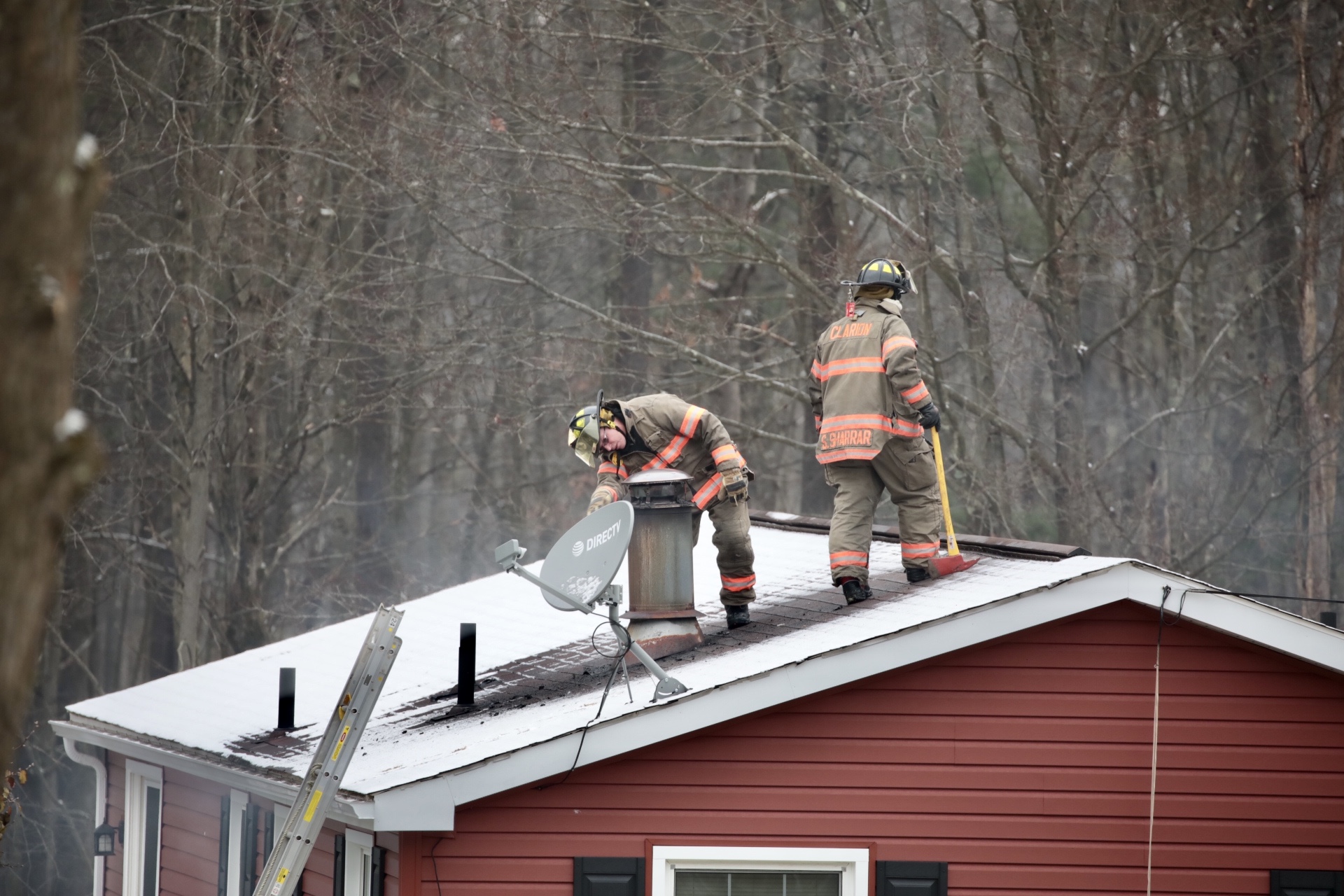 JEFFERSON CO., Pa. (EYT) – Calls for chimney fires aren’t that unusual this time of year as the colder weather sets in and people begin using fireplaces and wood-burning stoves.
JEFFERSON CO., Pa. (EYT) – Calls for chimney fires aren’t that unusual this time of year as the colder weather sets in and people begin using fireplaces and wood-burning stoves.
Such a call came into Clarion Fire & Hose Company No. 1 just last week. Luckily, the homeowner was able to take care of what turned out to be a malfunction of a wood-burning stove.
Lt. Mike Chesterfield, of Clarion Fire & Hose Company, urges residents to take precautions as they begin to use wood-burning stoves and fireplaces more. He says general maintenance is important in avoiding problems.
“If it’s a wood-burning or coal-burning type of appliance, make sure the chimney has been properly cleaned,” he said. “Make sure the dampers are working properly.”
Keep anything combustible away from any open flame or heating device.
“Make sure there’s a carbon monoxide detector in the house so if there is a malfunctioning heating device, the carbon monoxide can be detected,” Chesterfield recommended.
“That’s probably one of the biggest things this time of year, make sure that those are functioning properly.”
Smoke alarms are also important. Make sure the batteries have been changed, and the smoke detector is in working order.
Chesterfield said do not hesitate to call 9-1-1 “if you do think you have a problem.”
“That’s why we’re here,” he said. “It’s better to be safe than sorry. I’d rather come out and it be nothing than to come out and actually have a fire that takes five or six hours to put out.”
Mark Hicks, Chief of the Oil City Fire Department, highly recommended getting chimneys professionally cleaned prior to winter setting in.
“The reason we say professionally is that a lot of time a lot of the residents are elderly and some of the chimneys are 30 to 40 feet in the air,” he noted. “We would rather not have them go up on the roof to try to clean it out themselves.”
Professionals have the proper equipment and safety measures for the job, Hicks said.
“What needs to be cleaned is a build-up of creosote, a dark brown or black flammable tar deposited by wood smoke on the walls of a chimney. The substance rises with the smoke when it’s hot, but as it gets further up the chimney it cools and tends to stick to the chimney walls,” he explained.
It’s also important to burn only the fuel intended to go into your fireplace or wood-burning stove.
“You should be burning dry, aged wood. It should sit for at least one season. That way it’s dry and loses some of the creosote-making materials in it.”
Do not burn trash or plastics in a fireplace. A starter log should only be used once and then removed.
“Even if you don’t have a wood-burning stove or fireplace, you may have a furnace or hot water tank that puts exhaust out of an existing chimney. Its possible birds could build a nest in that chimney or other critters could get inside.”
“Getting them cleaned is important as well,” Hicks said. “Because that could lead to carbon monoxide building up in your home.”
Copyright © 2024 EYT Media Group, Inc. All rights reserved. Any copying, redistribution or retransmission of the contents of this service without the express written consent of EYT Media Group, Inc. is expressly prohibited.








